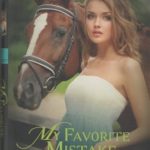You can spot one from a mile away. Classically a stunning silver color with a dark head and legs, the roan is a popular mount.

The roan gene produces a color pattern of white over any base color, although it is easiest to see on darker colors due to the contrast. Classic or true roan appears as white hairs intermixed with colored hairs (the base coat) across the horse’s body, leaving only the head and legs untouched and giving the body a silvery appearance. Sometimes, a roan will have a concentration of white hairs above the eyes, making the horse appear to have white eyebrows. On occasion, the roaning can appear only over the croup and hip area (this is referred to as ?minimal expression?).
A sorrel or chestnut horse with the roan gene is known as a red roan. A bay with roaning is a bay roan, while a black horse with roaning is a blue roan. All other colors can also carry the roan gene, although light colors like palomino make the roaning difficult to see. For registration purposes, AQHA recognizes these horses as their base color and notes that they carry the roan gene.
Roan is a dominant gene, so at least one of the parents must be a roan for the trait to be passed on. A horse can carry several modifiers. For example, a horse can have both the dun and roan genes.
Roan should not be confused with rabicano or sabino markings, which are caused by different genes. Roan typically envelops the horse’s whole body, leaving only the head and legs unaffected. In addition, areas of a roan?s hair that are scraped away will grow back as the horse’s base color; in the other patterns, generally speaking, the hair will grow back white.
The winter coat is different in that the base coat color will grow longer, but not the roan hair, while a rabicano will appear the same in the summer and winter. Foals in the early stages of going gray will usually have gray hairs immediately surrounding the eyes and muzzle and on the backs of the ears, as well as on the body. It is possible for a roan horse to also be gray if he has gray and roan parents. He will begin life as a roan and then gray out as he ages.
Color Facts
- A true roan is born solid. When he sheds his first foal coat, it will show the roan coloring. It does not change or lighten as he ages.
- When injured, a roan?s scars will heal in its base color. For example, a red roan?s scar will grow in sorrel (red) hair. An injured sorrel horse, on the other hand, would most likely grow in white hair.
- Popular lines of roan horses include the 1935 stallion Red Man (a son of Joe Hancock) and 1957 stallion Blue Valentine, famous for their mastery of the rodeo pen; 1984 red roan stallion Zippos Mr Good Bar, who stamped the distinctive color on many entries in the western pleasure ring; and 1980 blue roan mare Royal Blue Boon, whose progeny revolutionized the cutting world.
- Despite popular myth that says homozygous roans are born dead, research has proven the existence of such horses.
- In 2007, 7 percent of the horses registered with AQHA were roans.








